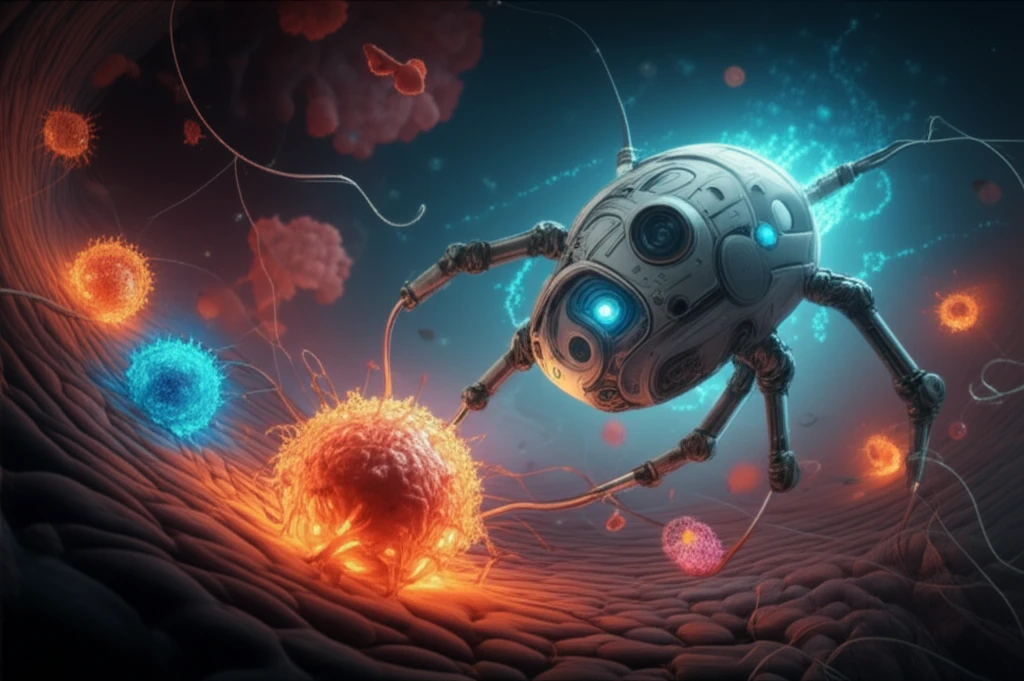
Targeting Cancer with Nanobots: A Glimpse into the Future of Precision Medicine
"Scientists are developing microscopic robots to target and destroy cancer cells, offering hope for more effective and less invasive treatments."
In the relentless battle against cancer, researchers are constantly seeking innovative ways to improve treatment outcomes and minimize the side effects that often accompany conventional therapies. A groundbreaking approach is emerging in the form of nanobots—microscopic robots designed to navigate the human body and deliver targeted treatments directly to cancer cells. This article explores the development, characterization, and potential of antibody-labeled super-paramagnetic iron oxide contrast agents to target prostate cancer cells for magnetic resonance imaging (MRI).
These tiny machines, often smaller than a human cell, are engineered with remarkable precision, allowing them to interact with biological systems at a molecular level. They can be programmed to perform various tasks, from delivering drugs directly to cancer cells to detecting and removing tumors. This technology has the potential to transform how we diagnose and treat cancer, offering hope for more effective and less invasive procedures.
This article will delve into the science behind nanobots, their current applications, and their future potential in the field of cancer treatment. We'll explore the challenges and ethical considerations associated with this technology and discuss the potential impact on patients' lives.
The Science of Nanobots: How They Work

Nanobots are typically constructed from biocompatible materials, such as polymers, proteins, or even DNA, making them safe for use in the human body. These materials are carefully selected for their ability to interact with biological systems without causing harm or triggering an immune response. The nanobots are then equipped with sensors, actuators, and drug-delivery systems, allowing them to perform complex tasks within the body.
- Targeted drug delivery: Nanobots can carry chemotherapy drugs or other therapeutic agents directly to cancer cells, increasing their effectiveness and reducing systemic toxicity.
- Early cancer detection: Nanobots can be equipped with sensors to detect early signs of cancer, enabling timely diagnosis and intervention.
- Minimally invasive surgery: Nanobots can be used to perform minimally invasive surgeries, reducing the need for large incisions and speeding up recovery.
- Improved imaging: Nanobots can enhance medical imaging techniques, such as MRI, to provide more detailed and accurate information about tumors.
The Future of Cancer Treatment with Nanobots
Nanobots represent a paradigm shift in cancer treatment, offering the potential for more effective, personalized, and less invasive therapies. While the technology is still in its early stages of development, the progress made thus far is nothing short of remarkable. As researchers continue to refine nanobots and explore their potential, we can look forward to a future where cancer is detected and treated with unprecedented precision, improving the lives of millions affected by this devastating disease.
